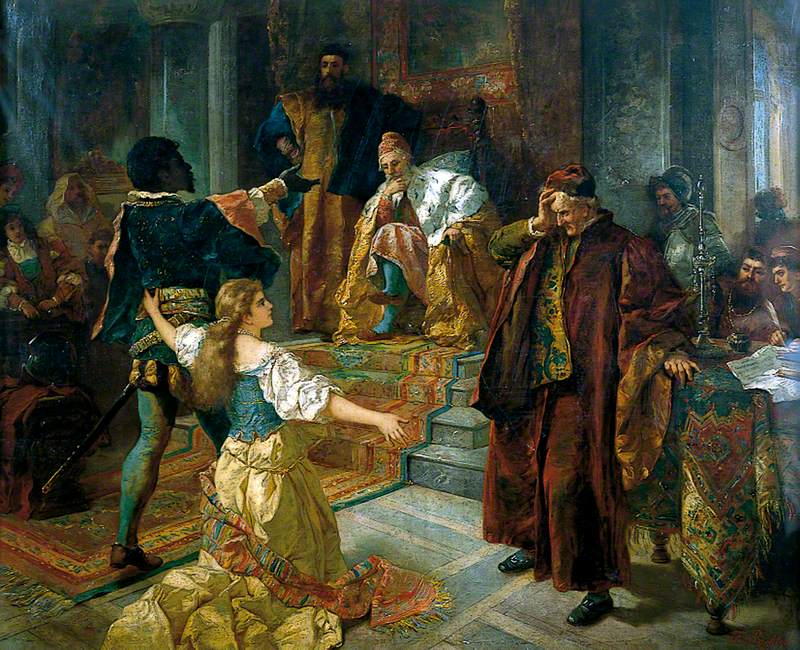Analysis of William Shakespeare's "Othello"
67
"Othello" is one of William Shakespeare's tragedies, exploring themes of jealousy, betrayal, and racial prejudice. Let's look at the brief analysis of the play:
1) Jealousy:
- The central theme of "Othello" is jealousy, portrayed through the character of Iago. His manipulative actions fuel Othello's insecurities, leading to tragic consequences. The play delves into the destructive nature of jealousy and its ability to corrode relationships.

2) Race and Prejudice:
- Othello, a Moor, faces racial prejudice and discrimination throughout the play. His marriage to Desdemona sparks tensions, reflecting the racial biases of the time. The play explores societal attitudes towards race and the impact of prejudice on individuals.

3) Manipulation and Deception:
- Iago's manipulative schemes drive the plot. His ability to deceive and manipulate others, especially Othello, highlights the destructive power of deceit. The play explores the consequences of trust placed in the wrong hands.

4) Tragic Flaw:
- Othello's tragic flaw is his vulnerability to manipulation due to his insecurities about his race and status. His inability to see through Iago's deceit contributes to the tragic outcome.

5) Desdemona's Innocence:
- Desdemona's innocence and purity stand in stark contrast to the deceit and corruption around her. Her tragic fate underscores the destructive impact of jealousy and manipulation.

6) Female Characters:
- The female characters, Desdemona and Emilia, play crucial roles in the narrative. Desdemona's loyalty and Emilia's eventual defiance challenge traditional gender roles and add complexity to the portrayal of women in the play.

7) Honor and Reputation:
- Othello's preoccupation with his honor and reputation is exploited by Iago. The play explores the theme of honor and its susceptibility to manipulation.

8) Tragic Irony:
- "Othello" employs tragic irony, as the audience is aware of Iago's deceit while the characters remain oblivious. This creates tension and emphasizes the inevitability of the tragic events.
.jpg)
9) Language and Imagery:
- Shakespeare's use of language and imagery in "Othello" is notable. The play features eloquent soliloquies, powerful dialogue, and vivid imagery that contribute to the emotional intensity and complexity of the characters.

10) Cultural Context:
- The play reflects the cultural and societal norms of its time, particularly attitudes towards race and marriage. Analyzing "Othello" involves considering the historical and cultural context in which it was written.
11) Tragedy of Miscommunication:
- The tragic outcome is exacerbated by miscommunication and misunderstandings. Characters often misinterpret situations, leading to tragic consequences.

12) Final Tragedy:
- The play concludes with a tragic resolution, as Othello's jealousy and misplaced trust lead to the death of Desdemona and his own eventual demise.
"Othello" is a powerful exploration of human nature, trust, and the destructive impact of jealousy. Its examination of racial prejudice adds depth to the narrative, making it a timeless and thought-provoking work.
I share audiobook for ''Othello'' for those who has no time to read;
Othello by William Shakespeare Audiobook;
References;
- "Othello". Walters Art Museum.
- Hodgdon, Barbara; Worthen, W. B. (8 January 2024). A companion to Shakespeare and performance. Wiley. ISBN 978-1-4051-1104-1.
- Except where otherwise stated, references to the play Othello are to Honigmann, E. A. J. and Thompson, Ayanna (Eds.) "Othello" The Arden Shakespeare, Third Series, Bloomsbury Publishing Plc., 2016.
- Except where otherwise stated, references to other works by Shakespeare are to Wells, Stanley and Taylor, Gary (Eds.) "The Oxford Shakespeare - The Complete Works" Second Edition, Oxford University Press, 2005.
Thank you for reading!
You can complete great comment tasks at here. #othello #shakespeare #play #tragedy #audiobook #drama #theatre #analysis #bookreview



:max_bytes(150000):strip_icc()/168857093-56a85e935f9b58b7d0f24f4c.jpg)



































